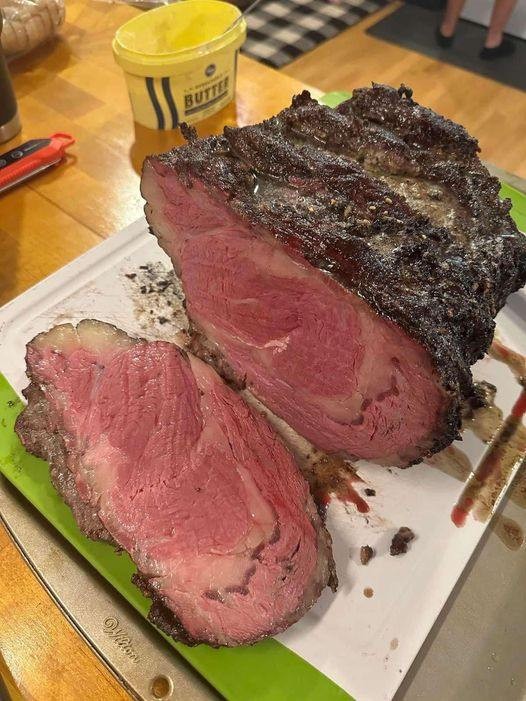ADVERTISEMENT
**How to Cook the Perfect Ribeye Steak: A Guide to Juicy, Flavorful Excellence**
When it comes to steaks, few cuts are as beloved as the **ribeye**. Known for its marbled fat, tenderness, and rich, beefy flavor, the ribeye steak is a go-to choice for steak lovers around the world. Whether you’re a seasoned home cook or a novice, learning how to cook a **ribeye steak** to perfection will elevate your cooking game and impress anyone at your dinner table.
A **ribeye steak** can be cooked in various ways—grilled, pan-seared, or even broiled—but the result should always be a juicy, tender, and flavorful steak that’s cooked to your desired level of doneness. Let’s dive into why the ribeye is such a standout cut and how you can prepare it at home to achieve steakhouse-quality results.
### Why Ribeye Steak is So Special
The ribeye steak is cut from the rib section of the cow, specifically the rib primal, which sits between the chuck and the loin. This region of the cow is known for producing rich, tender cuts of meat, and the ribeye is a prime example.
– **Marbling:** Ribeye steaks are highly prized for their marbling—thin veins of fat running through the meat. This fat melts during cooking, infusing the steak with flavor and helping keep it juicy and tender.
– **Tenderness:** While the ribeye is a bit more tender than other cuts like the sirloin, it still maintains enough chew and texture to offer a satisfying steak experience.
– **Flavor:** Thanks to the marbling and natural fat, ribeyes have a rich, beefy flavor that sets them apart from leaner cuts of steak.
Whether you prefer your ribeye grilled to smoky perfection or pan-seared to create a caramelized crust, it’s a versatile cut that can be cooked to suit your preferences.
### Ingredients for Ribeye Steak
To make the most of your ribeye steak, you don’t need many ingredients. The key is to let the natural flavors of the meat shine through. Here’s what you’ll need:
– **Ribeye steaks** (1-1.5 inches thick; bone-in or boneless, depending on preference)
– **Kosher salt** (for seasoning)
– **Freshly ground black pepper**
– **Olive oil** or **butter** (for cooking)
– **Fresh garlic** (optional, for additional flavor)
– **Fresh herbs** (like rosemary or thyme, optional)
### How to Cook the Perfect Ribeye Steak
Cooking a ribeye steak to perfection requires a few simple techniques and the right timing. Whether you’re using a cast-iron skillet or grilling it on an outdoor BBQ, here’s how you can make sure your ribeye comes out perfectly every time.
#### 1. **Prepare the Steak:**
– Take the ribeye steaks out of the refrigerator at least **30 minutes to 1 hour before cooking**. Allowing the steaks to come to room temperature ensures they cook more evenly.
– Pat the steaks dry with a paper towel to remove any excess moisture. This helps create a nice sear when cooking.
– Season the steaks generously with **kosher salt** and **freshly ground black pepper**. You want a good amount of seasoning to enhance the natural flavor of the meat. For extra flavor, you can also rub the steaks with **minced garlic** or fresh **herbs** like rosemary or thyme.
#### 2. **Cooking the Ribeye Steak:**
**Method 1: Pan-Seared Ribeye Steak (Stovetop)**
– **Heat your skillet:** Place a **cast-iron skillet** or heavy-bottomed pan on the stove over high heat. Allow it to get very hot. A hot pan is essential to achieving a good sear.
– **Add oil:** Once the pan is hot, add a tablespoon of **olive oil** or **butter** to the pan. The oil will help prevent the steak from sticking, and the butter will add extra flavor.
– **Sear the steak:** Place the ribeye in the pan and let it sear without moving it for about **3-4 minutes** on the first side. This will create a beautiful brown crust. Then, flip the steak and sear the other side for an additional **3-4 minutes**.
– **Add flavor:** For extra richness, you can add **a couple of garlic cloves** (crushed with the skin on) and a **sprig of rosemary or thyme** to the pan while cooking. Spoon the melted butter over the steak for added flavor as it cooks.
– **Check doneness:** Use a **meat thermometer** to check the internal temperature:
For Complete Cooking STEPS Please Head On Over To Next Page Or Open button (>) and don’t forget to SHARE with your Facebook friends
ADVERTISEMENT
